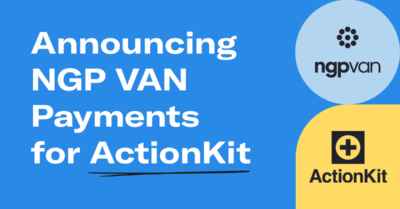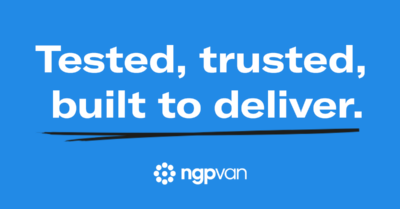How to Determine Your Vote Goal: The Number You Need to Win

Whether you’re running for office or managing a campaign, understanding the concept of a vote goal is crucial. Knowing how many votes you need to secure victory will guide your campaign strategies.
But how does one calculate this elusive win number? It requires careful analysis, strategic planning, and a deep understanding of the electoral landscape.
In this guide, we will walk through the process of determining your vote goal and equip you with the insights you need to triumph in your electoral race.
What is a Vote Goal?
A vote goal, also known as a win number, typically refers to a specific numerical target calculated by a political candidate, campaign, or advocacy group during an election or a referendum. It represents the desired number of votes needed to achieve victory or advance a particular cause.
Campaign teams use vote goals to guide and maximize the success of their outreach, mobilization, and messaging strategies to targeted groups of voters within their respective districts.
Why is Determining a Vote Goal Important?
Setting a vote goal is a common practice in political campaigns as it helps organizers and campaign staff:
- Strategize their efforts: Your vote goal will guide your campaign strategies and help you make informed decisions about where to focus your time.
- Allocate resources more effectively: Campaigns often operate with limited resources. With a win number in mind, you can allocate your resources to areas where you need to secure the votes you need to win.
- Measure their progress: Vote goals offer a quantifiable metric for success, helping campaigns gauge whether they are on track for victory and enabling strategy adjustments as needed.
In a competitive political environment, knowing your win number is essential to run an efficient and effective campaign and staying ahead of the competition.
How to Determine a Vote Goal
The process of determining a vote goal can be broken down into two steps: calculating voter turnout and a win number.
Calculating Voter Turnout
Each election has varying levels of participation, and your win number must factor in the expected turnout. Review past election results in the relevant jurisdiction to understand voting patterns, turnout rates, and the performance of similar candidates or causes in previous elections.
Then, use this historical data to predict voter turnout in the upcoming election. Some people like to average turnout over multiple elections while others choose to slightly overestimate turnout to aim and work toward a higher win number. For instance, based on previous elections, you may determine that a 35% voter turnout is expected this year. You can then multiply the total number of registered voters in your district by 35% to estimate the number of votes that will be cast in the upcoming election.
Example: 0.35 (expected voter turnout as a decimal) x 26,400 (total number of registered voters in your district) = 9,240 expected votes
Calculating Your Win Number
In a general election, the number you need to win is usually a simple majority: 50% + 1 (unless there are more than two candidates in the race). To calculate your win number for most cases, take the number of expected votes that you calculated in the previous step, multiply it by 50%, and then add one.
Example: ((9,240 (expected votes) x 0.5) + 1) = 4,261
4,261 is your win number! A simple majority is what you need to win in most cases, but most campaigns add a vote margin to account for other factors that may impact turnout. This buffer helps ensure you have a comfortable cushion of votes. For instance, if you wanted to add a 3% margin, you would simply add that to your calculation.
Example: ((9,240 (expected votes) x 0.53) + 1) = 4,899
Regardless of how you calculate your win number, you can break it down into individual vote goals on a precinct-by-precinct basis to more effectively identify where you need to focus your campaigning efforts throughout the election cycle.
3 Tips for Leveraging Your Vote Goal
Now you have your win number, you can apply it to your campaign strategies. Here are three tips to help you make the most of your vote goal:
1. Share Your Vote Goal
Sharing your vote goal with staff, stakeholders, and volunteers can help explain the importance of consistent outreach to voters to constantly work towards that goal. Regularly communicate your progress and discuss strategies to help achieve your vote goal.
Establish clear milestones and benchmarks that break down these strategies into manageable increments, such as weekly or bi-weekly targets, to track the campaign’s progress over time. Celebrate and share achievements along the way to recognize your team’s hard work to maintain morale and showcase momentum.
2. Tailor Your Messaging and Outreach
Customize your campaign messages and outreach efforts to resonate with specific voter groups that can help you achieve your vote goal calculations.
These groups will vary depending on the nature of the campaign, the issues at hand, and the demographics of the constituency, but here are three common groups to consider in your persuasion strategy:
- Swing voters or undecided individuals: These voters can determine the outcome of an election because it’s not predictable which candidate or party they will vote for. Conduct research to better understand their concerns and tailor your messaging to offer solutions that align with their values.
- Low-propensity voters: Low-propensity voters are eligible to vote but have a history of infrequent participation. Emphasize how close your race is and explain how their participation can bring about positive change.
- First-time voters: First-time voters represent the future of democracy. Address issues that resonate with young voters, leveraging social media platforms to connect with them, and providing clear and accessible information about the voting process.
Guided by your win number, create your field plan and voter outreach plan to identify and contact the voters you need to win your race. Ultimately it’s up to your campaign to figure out what groups are most important to persuade and mobilize, but those three groups may offer some examples of who you may want to target in your outreach.
3. Mobilize Your Supporter Base
Engage in robust Get Out the Vote (GOTV) efforts to make sure your supporters cast their ballots. While these tactics are used throughout the election cycle, these GOTV activities can include:
- Canvassing (door-knocking): Door-knocking involves campaign volunteers or staff going door-to-door to engage with voters personally. It allows for direct, face-to-face interactions with voters that you need to mobilize to get out and vote.
- Phonebanking: Phonebanking involves volunteers or campaign staff making calls to voters. Phonebanking can be especially effective for large, difficult-to-navigate, or rural areas.
- Early voting and absentee ballot efforts: Encouraging early and absentee voting can help secure votes before Election Day. To promote early voting, emphasize the convenience and flexibility it offers (especially to your identified supporters).
Although the exact timing will vary depending on your specific election and jurisdiction, you may also want to create a ballot chasing program for your campaign. This program helps you track where voters are at in the voting process so you can contact them to tell them about your campaign, earn their support, and encourage them to return their ballot as soon as possible. For every voter that indicates support for your campaign and returns their ballot, that’s one more vote you can count toward your win number!
The Number You Need to Win
Remember the people behind the numeric goal you need to hit for your campaign. Winning an election is about building a strong coalition of supporters, effectively communicating your vision, and mobilizing voters to turn out on or before Election Day. This is where NGP VAN can help you supercharge your organizing and mobilization efforts.
Trusted by campaigns of every size, NGP VAN’s industry-leading software has helped elect thousands of Democrats to local, state, and federal offices. Learn how NGP VAN can help you increase voter turnout and achieve your vote goal.



